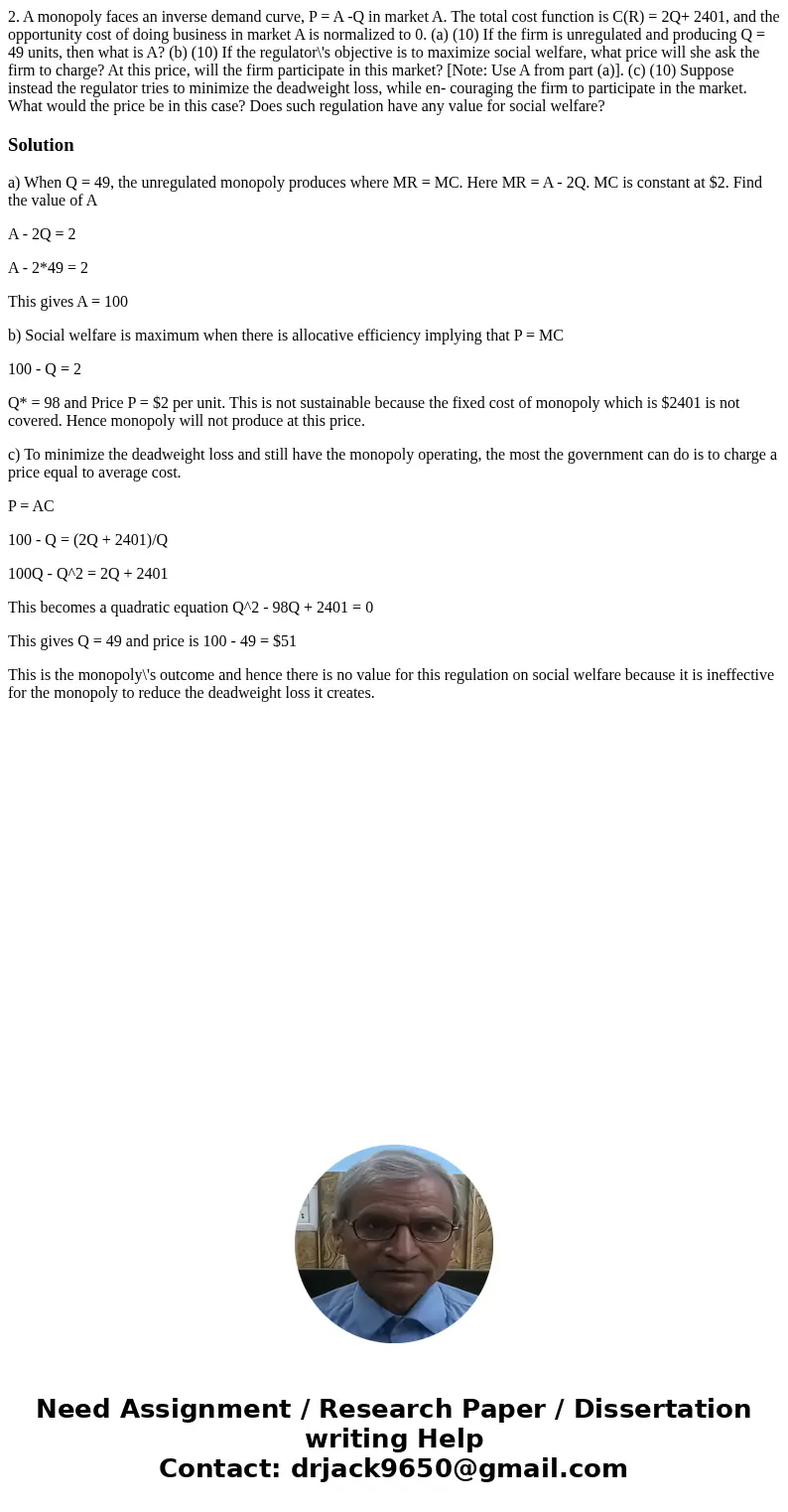2 A monopoly faces an inverse demand curve P A Q in market
Solution
a) When Q = 49, the unregulated monopoly produces where MR = MC. Here MR = A - 2Q. MC is constant at $2. Find the value of A
A - 2Q = 2
A - 2*49 = 2
This gives A = 100
b) Social welfare is maximum when there is allocative efficiency implying that P = MC
100 - Q = 2
Q* = 98 and Price P = $2 per unit. This is not sustainable because the fixed cost of monopoly which is $2401 is not covered. Hence monopoly will not produce at this price.
c) To minimize the deadweight loss and still have the monopoly operating, the most the government can do is to charge a price equal to average cost.
P = AC
100 - Q = (2Q + 2401)/Q
100Q - Q^2 = 2Q + 2401
This becomes a quadratic equation Q^2 - 98Q + 2401 = 0
This gives Q = 49 and price is 100 - 49 = $51
This is the monopoly\'s outcome and hence there is no value for this regulation on social welfare because it is ineffective for the monopoly to reduce the deadweight loss it creates.

 Homework Sourse
Homework Sourse